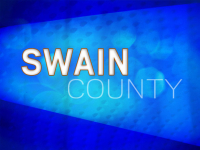The appropriately named 'blue darter'
 When I was a boy my favorite sport was baseball. I was a pitcher. I didn’t have any idea where the ball was going … or care … but I could throw hard. I liked the game and I liked the language associated with the game: “high hard one” … “powder river” … “chin music” … “circus catch” … “ rhubarb” … “dying quail” … “frozen rope” … “blue darter.”
When I was a boy my favorite sport was baseball. I was a pitcher. I didn’t have any idea where the ball was going … or care … but I could throw hard. I liked the game and I liked the language associated with the game: “high hard one” … “powder river” … “chin music” … “circus catch” … “ rhubarb” … “dying quail” … “frozen rope” … “blue darter.”
The connotations associated with “blue darter” in the late 1940s and early 1950s are interesting:
(1) in baseball it was a low hard-hit line drive (a “frozen rope”); (2) in street slang it was an ignited fart with substantial methane content (usually activated in a darkened movie theater); and (3) in ornithological circles it was a woodland hawk. Herein we’ll turn our attention to number 3.
While observing your backyard bird feeder this winter, you may be startled by a blue flash that suddenly rockets into the scene and snatches one of your resident cardinals, nuthatches, chickadees, or titmice. The “blue flash” will have been either a sharp-shinned or a Cooper’s hawk, the infamous “chicken hawks” of rural lore that primarily feed on other birds. Because of their slate-blue backs and lightning-quick movements when swooping or tracking prey through brush, they are also widely known in the South as “blue darters” or, less frequently as “blue dollars.”
During the Great Depression era of the 1930s, when chickens were essential items in the home economies of many southern families, “chicken hawks” were despised and shot on sight. Writing in Birds of the South (1933), North Carolina naturalist Charlotte Hilton Green — normally a mild-mannered, bird-loving sort — waxed eloquent in her chapter titled “Two Bad Hawks” on the vices of these species:
“The two hawks responsible for the hatred and suspicion which farmers have for birds of prey as a whole are the sharp-shinned and the Cooper’s. These two villains of hawkdom are the ones that continuously raid poultry yards and war upon small birds ... Liking young ‘fryers’ as well as any good southerner, if these hawks once make a successful raid on the poultry yard, they are likely to make daily visits ... either until they literally clean out the farmer, or the farmer brings down the hawk.”
Related Items
Naturalist Scott Weidensaul thinks the late twentieth century inclination of the “two bad hawks” to ravage bird feeders came about because of the nationwide decline of chicken coops and yards. His description of a sudden “blue darter” attack is vivid:
“Within a few seconds the soothing tapestry disintegrates. What a moment before had been a flock of songbirds gathered peacefully at a feeder is now a frenzy of alarm calls and flashing wings .... One junco is an instant too slow in fleeing and is pinned to the ground dead, its blood a few flecks on the snow. The sharp-shinned hawk, slim and brown, daintily plucks its meal and begins feeding.”
The modern bird watcher’s reaction is likely to be exactly the same as that of the old-time chicken owner: Outrage! After all, these are our birds, aren’t they? Shouldn’t we get a gun and wait for the next attack with vengeance in our hearts?
“The answer, of course, is that no matter how protective we may feel about the birds we feed, they are wild animals, and predation is natural part of their lives (indeed, most are themselves predators, feeding on a variety of invertebrates),” Weidensaul correctly notes. “Hawks are simply the next step in a long and complicated food chain.”
Normally, these hawks are observed not around feeders but in woodlands or open fields. Here in the Smokies region, they are more frequently spotted in winter. But summertime sightings support the theory that both species nest here sparingly. It’s my impression that the sharp-shinned is slightly more common in the southern mountains, but the Cooper’s may be spotted more often due to its inclination toward hunting in open habitat.
Sharp-shinned (10-14 inches) and Cooper’s hawks (14-20 inches) are similar in appearance. Adults are slate blue above and barred rusty brown beneath, with short rounded wings and long slender tails. The females of both species are always the larger birds, so that a large 14-inch long female sharp-shinned is very similar to a small 14-inch long male Cooper’s hawk.
To distinguish between sharp-shinned and Cooper’s hawks, quickly observe their size, tails, and flight patterns. In addition to the size differences, the sharp-shinned species has a tail squared at the tip and a comparatively shallow, irregular wing beat. The Cooper’s species has a tail rounded at the tip and flies with deep, deliberate strokes, often with three flaps and a glide.
George Ellison wrote the biographical introductions for the reissues of two Appalachian classics: Horace Kephart’s Our Southern Highlanders and James Mooney’s History, Myths, and Sacred Formulas of the Cherokees. In June 2005, a selection of his Back Then columns was published by The History Press in Charleston as Mountain Passages: Natural and Cultural History of Western North Carolina and the Great Smoky Mountains. Readers can contact him at P.O. Box 1262, Bryson City, N.C., 28713, or at This email address is being protected from spambots. You need JavaScript enabled to view it..









